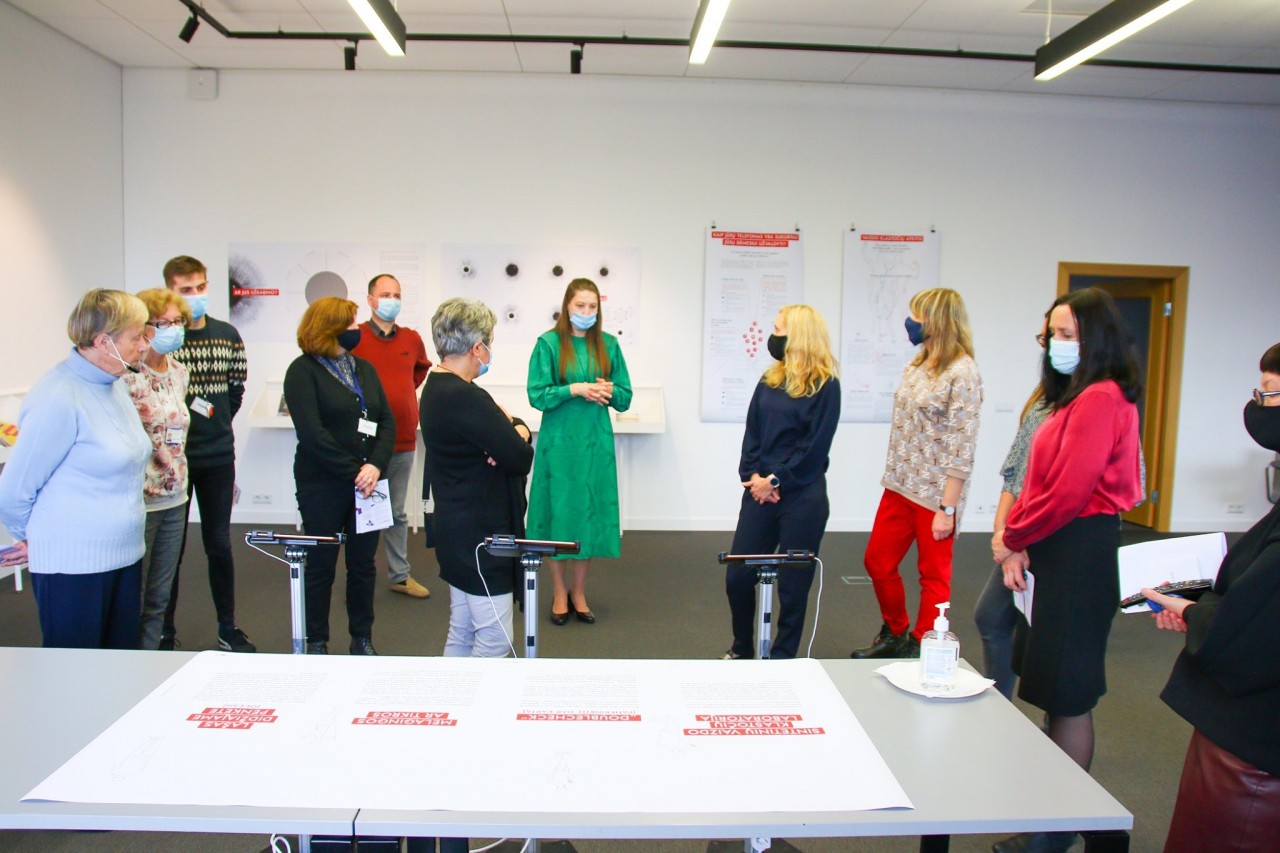Media Literacy Pop-Up Interventions in Lithuanian Libraries – Interview
13 January 2021
Libraries are well-positioned to deliver equitable media and information literacy learning opportunities for their communities. As part of a project curated by Tactical Tech and implemented jointly with IFLA and Save the Children Italia, three libraries in Lithuania hosted pop-up media literacy interventions – and now share their experiences.

Photo by courtesy of the National Library of Lithuania/Lietuvos nacionalinÄ Martyno Mažvydo biblioteka
The past months saw new developments, concerns and policy dialogue around online misinformation take on an even greater sense of urgency. As information professionals with deep ties to the communities they serve, libraries are well-positioned to deliver equitable media literacy learning opportunities to help address these concerns.
As highlighted earlier this year, IFLA is working with our partners in several European countries on a project within the framework of the EU ‘Preparatory Action on Media Literacy for All’, curated by Tactical Tech. The project brought together a group of librarians from Ireland, Lithuania, Slovenia and the Netherlands who hosted media literacy interventions in their communities using newly developed engaging materials and exhibits.
In the last week of October, three libraries in Lithuania piloted Media Literacy interventions and hybrid exhibitions to raise awareness and offer skills-building opportunities for their users. The Martynas Mažvydas National Library of Lithuania, the Klaipeda I. SimonaitytÄs Public Library and the Utena A. and M. Miskiniai Public Library launched a mixed virtual and physical media literacy event programme.
Their experiences offer valuable insights on how this format and type of interventions can be successfully delivered through libraries. So we asked them to tell us a bit more about the work they have done!
What kind of intervention did you organise?
For one week, the three libraries hosted walk-in exhibitions where our communities could learn more about misinformation and the skills to tackle it. The exhibitions themselves included the Glass Room posters and videos examining the online information environment.
Another part of the exhibition were tablets pre-loaded with engaging quizzes and games that offered visitors an opportunity to test their skills and learn more about misinformation.
In addition, the National Library prepared a selection of thematic books to display in its exhibition venue for users who wanted to find out more background information and dig deeper.
In each library, a trained media literacy champion – a member of the library staff – was available to tell visitors more about the exhibition themes and materials, offer advice and answer questions.
In the meantime, our libraries jointly hosted a series of online workshops to explore these questions further. Some webinars focused on helping visitors hone their skills in spotting misinformation and protecting their privacy online, while others offered a virtual walkthrough of the exhibition.
What were the impacts of your ‘hybrid’ exhibitions?
During the week of the exhibition, we organised ten virtual workshops accompanying the events; nearly a hundred people attended these. Feedback from participants suggested that some things they heard and saw during these events – for example around covert advertising – were completely new to them – something they have never considered before. Participants also mentioned that it was an important realisation for them – understanding just how strongly social media and the web are affecting their daily lives.
We think and hope that visiting this exhibition and participating in the virtual seminars encouraged people to take a deeper interest in different forms of misinformation, and continue to seek out learning opportunities. On a practical level, we hope that they will be more aware of potential pitfalls when sharing information online.
Naturally, the pandemic impacts what channels and media are at a library’s disposal to support media and information literacy learning. How have the three libraires adapted their intervention plans?
This period is not easy for everyone. It means that libraries too have to change some things, and try not to stop all activities. All three libraries worked to find a big space for the exhibition in order to follow recommended safety measures, and make it possible for visitors to safely look around and explore.
On the one hand, unfortunately, the number of people at the opening events of the exhibitions was limited – to avoid large gatherings. Throughout the week, our solution was to apply the same rules as for wider library visits – limiting group sizes and instructing visitors to wear masks.
On the other hand, the virtual elements of the exhibition helped us reach more people. For example, the workshops and learning activities were held fully online. We also emphasised the virtual exhibition and online activities when promoting and publicising our programming.
Did this experience offer you any new insights about library-based media literacy training or interventions at large? For example, what works well, what practices could be worth replicating?
Overall, the interest from visitors and their feedback has once again showed that it is important to speak about information, misinformation, digital design tricks – the topics this exhibition addressed. People should get reliable information, and the library is a good source. This experience has only confirmed the fact that libraries are ready to be actively involved in raising public competences in the field of media and information literacy.
A very useful and proven solution in these circumstances was to organise a combined exhibition – matching a physical with a virtual exhibition.
It was also helpful that the format of the physical exhibition was flexible and easily adaptable to different rooms. So we hope that the exhibition will travel further to Lithuanian libraries, reaching more and more people.
Alma MaseviÄienÄ,
Academic secretary of the Martynas Mažvydas National Library of Lithuania
You can start your own The Glass Room: Misinformation Edition experience on the website of the exhibition.